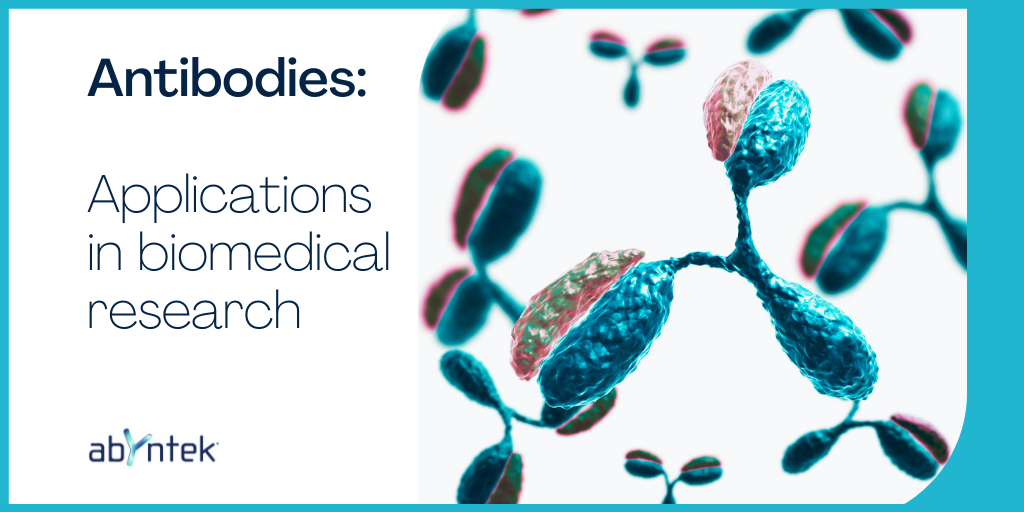Antibodies are reagents of high specificity and sensitivity that make them very useful tools in many research applications. Although the best known application is still protein detection and quantification, antibodies are used for many other applications in biomedical research.
In this post we review the applications of antibodies in biomedical research through the use of the main techniques.
Applications of antibodies in biomedical research
ELISA
ELISA (Enzyme-linked immunosorbent assay) is carried out by adding the sample of interest to a 96-well plate where the antibodies will capture and detect the presence of the protein of interest.
The main applications of antibodies in the ELISA technique are:
- Detect the presence of a specific protein in a heterogeneous sample
- Quantify the amount of protein present in said sample by comparing the absorbance of the test sample with the standard curve generated from serial dilutions of a known concentration of the target protein
Western Blot
The Western Blot technique makes it possible to separate proteins from complex samples based on their molecular weight and subsequently, using labeled antibodies, to detect them by chemiluminescence or fluorescence.
The main applications of antibodies in the Western Blot technique are:
- Detect the presence of the target protein in a specific sample
- Quantify said protein by loading the corresponding controls onto the gel that allow its concentration to be normalized
- Compare the relative expression levels between different cell types or between different treatment conditions.
Immunoprecipitation
This method uses antibodies conjugated to magnetic or agarose beads that, once binded to the protein of interest, cause the antibody-protein complex to precipitate by centrifugation or other mechanical method. After washing the unbound protein, the addition of a low pH buffer causes dissociation of the complex, allowing purification of the target protein.
The main applications of antibodies in the immunoprecipitation technique are:
- Extract a protein of interest from a complex sample for subsequent experiments such as:
- Quantification by Western Blot or ELISA
- Interaction studies between proteins
Immunohistochemistry / Immunocytochemistry
In these techniques, antibodies are used to visualize the presence of a specific protein in a cell or tissue:
The main applications of antibodies in these techniques are:
- Detect the presence of the target protein and its location within the cell (Immunocytochemistry)
- Detect the presence of the target protein and its location in a tissue (Immunohistochemistry)
Flow cytometry
This technique allows the detection of proteins expressed on the surface of a cell, or by means of membrane permeabilization, to detect intracellular protein localization. The sample is incubated with specific antibodies conjugated to fluorophores, and the fluorescent signal is subsequently measured using a flow cytometer.
The main applications of antibodies in the Flow Cytometry technique are:
- Identify / analyze cell populations
- Measure the relative amount of a protein expressed on the surface or inside of a cell
In Vivo Use
Another application of antibodies in biomedical research is their use to interfere with In Vivo processes. For these applications, In Vivo grade antibodies (with higher purity, ultra-low concentrations of endotoxins and free of stabilizers and preservatives) should be used.
The main applications of In Vivo antibodies are:
- Inhibit the function of a protein by stopping its effect on the body
- Activate cell pathways by binding to cell receptors
- Deplete a specific cell population to perform functional analyzes
May we help you find the antibody you need? Try our new product browser here




